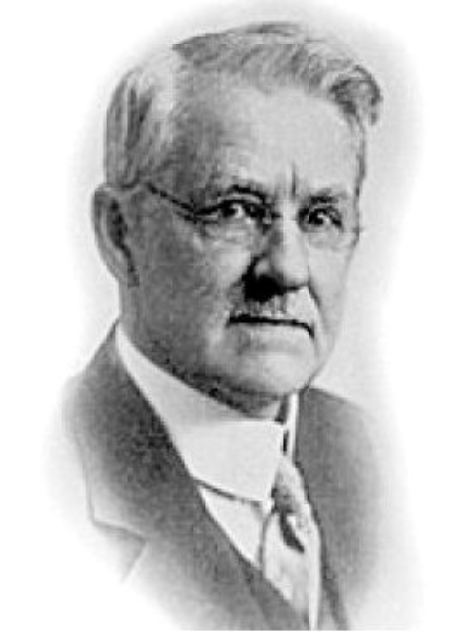Gilmer and Black: Pioneers of dentistry

Adams County was fortunate to be the home of two of the foremost dentists of their time: Dr. Thomas L. Gilmer and Dr. Green Vardiman Black. Dr. Gilmer represented a long history in medicine and dentistry, and Dr. Black brought dentistry forward as a profession.
Quincy dentist Dr. Thomas L. Gilmer was the fifth generation in a line of medical professionals that began with the migration of his great-great-grandfather to colonial America from Scotland in 1731. His grandfather, John Thornton Gilmer, was born in 1774 in Christian County, Ky., and came to Adams County in June 1842, where he became a prominent physician. Gilmer Township was named after him. Dr. Fredrick George Gilmer, Thomas’s father, a physician, was born in 1806 and died in 1871. He practiced in Lincoln County, Mo. Thomas was born in 1849 in Lincoln County. He came to Quincy in 1876 and remained there until 1889.
In the early days of dentistry, one could associate with a dentist to learn the craft. Dr. Gilmer practiced dentistry with his father in Lincoln County for a few months before moving to Waverly. There he established a dental practice for four years. He met his wife Ella Bostick while in this area and they were married in 1868. He practiced for a short time with a Dr. Bull in Alton while he attended the Missouri Dental College, the forerunner of Washington University School of Dental Medicine. He also attended classes at the St. Louis Medical Collage at the same time and where he continued to study after he moved to Quincy.
While in Quincy he shifted his medical education to the Quincy College of Medicine receiving his medical degree and his Illinois medical license in 1885.
From 1875 to 1899, The Quincy College of Medicine occupied the former John Wood Mansion on the north side of State Street between 11th and 12th streets.
The medical school was a part of Chaddock College. Chaddock College, as a whole, became Chaddock Boys School and eventually just “Chaddock”. While in Quincy, Dr. Gilmer taught microbiology and histology at the Quincy College of Medicine and served as oral surgeon at St.
Mary Hospital.
In 1889 Dr. Gilmer moved to Chicago and became an adjunct professor of oral surgery at the Chicago College of Dentistry. In 1891, Dr. Gilmer helped form a committee that established Northwestern University Dental School. He served as its third dean and was a professor of oral surgery there. He was the founder of the Institute of Medicine of Chicago. He had many papers published in the field of oral surgery and was recognized as an expert in the bacteriology of the dental abscess and the treatment of fractures to the jaw.
Dr. Gilmer was a friend for 50 years of another Adams County dentist, who is today considered the father of modern dentistry.
Dr. G. V. Black was born in Winchester in 1836 and at the age of 17 went to learn the practice of medicine from his brother, Thomas G. Black in Clayton. Dr. Black studied medicine under his brother for four years and then moved to Mount Sterling to study dentistry with J.C. Spears. His study with Spears was short and in 1856 he moved to Winchester to open his own dental practice.
He enlisted in the 129th Illinois Volunteers and served as a Union army scout during the Civil War. He was seriously injured and after his recovery was discharged in 1863. Upon his return from the war, he moved his dental practice to Jacksonville and from there started a meteoric rise in the history of dentistry with his many experiments, research, and dental inventions. In 1870 he invented the cord-driven dental engine. He invented a foot motor for dentistry. He was one of the first to use nitrous oxide as an anesthetic in dentistry.
In 1896, Dr. Black closed his Jacksonville practice and accepted an appointment to the faculty of the Northwestern University Dental School. He was elected dean the following year. He remained the Dean at Northwestern for the remainder of his life. He died in 1915.
Dr. Black was noteworthy in a wide range of endeavors. He invented an electric thermostat, a machine for grinding sections of teeth, a dynamometer, a phagodynamometer for measuring the amount of force for chewing various foods, and a gnathodynamometer for measuring the strength of the bite.
He also developed the classic dental operative treatment of dental decay that is still relevant today and he developed a system of dental nomenclature.
He wrote the first text book of dental anatomy, along with the study and improvement of dental silver filling material, studies of dental tooth deposits, dental pathology, and dental bacteriology. He studied German, Latin,algebra, geometry and the basic sciences. He had a great interest in bacteriology.
Dr. Black had not only an interest in the science and practice of dentistry; he was very much involved in organized dentistry.
He joined the Missouri State Dental Society in 1866 and the Illinois State Dental Society in 1868. He served as president of the Illinois State Dental Society in 1870. He was instrumental in raising dentistry to a professional level by helping to develop standards for the practice of dentistry and was elected the president of the Illinois State Board of Dental Examiners and served from 1881 to 1887. These accomplishments lead to the licensing of dentists and brought dentistry from the guild stage to the “professional” stage.
The contributions of these two dentists that had significant contact with Quincy and Adams County changed the status, image, and character of dentistry.
Even 100 years after their passing, their accomplishments can be seen today.
Dr. Richard Gregory retired from his Quincy dental practice in 2015 after 46 years in dentistry. He is a graduate of the University of Illinois School of Dentistry in Chicago.






